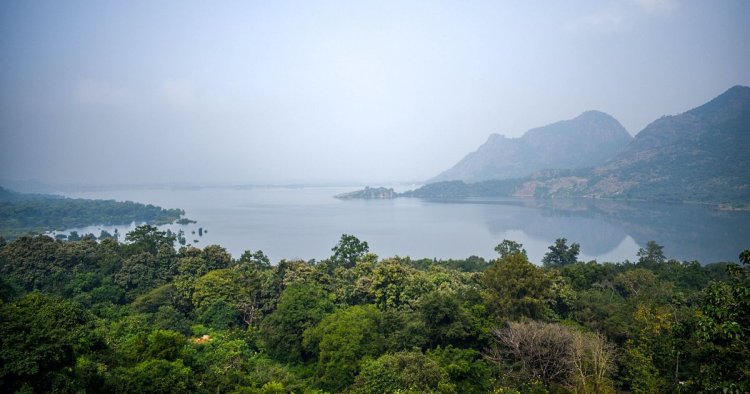What causes ecosystems to become unstable?

Massachusetts, US: It might be difficult to sort through all the variables that affect how complex ecological groups behave. The number of species present in the community and how strongly they interact with one another have been found to be the only two factors that can accurately predict how these ecosystems would behave.
Researchers were able to identify three ecological community states in investigations of lab-grown bacteria and determine the circumstances under which each state may be transitioned. These discoveries enabled the scientists to develop an ecosystem "phase diagram," which is akin to the diagrams physicists use to explain the circumstances that govern the change of water from solid to liquid to gas.
According to Jeff Gore, a professor of physics at MIT, "what's astonishing and fantastic about a phase diagram is that it summarises a vast deal of information in a very basic manner." "We can draw a border that anticipates the commencement of population fluctuations and the loss of stability."
The senior author of the paper, which was published in Science today, is Al Gore. The paper's principal author is MIT graduate student Jiliang Hu. Other authors include Guy Bunin, a professor of physics at the Israel Institute of Technology, Daniel Amor, a former postdoc at MIT, Matthieu Barbier, a researcher at the Plant Health Institute at the University of Montpellier, France, and Daniel Amor.
Population dynamics
The dynamics of natural ecosystems are challenging to examine because while scientists can make observations about how species interact with each other, they usually can't undertake controlled experiments in the wild. Gore's lab specialises on employing microorganisms such as bacteria and yeast to investigate interspecies interactions in a controlled way, hoping to understand more about how natural ecosystems work.
His laboratory has recently shown how cooperative and competitive behaviour affects populations and has discovered early indicators of population collapse. His lab has gradually progressed throughout that time from focusing on just one or two species at a time to examining broader-scale ecosystems.
Gore developed an interest in attempting to test some of the theories put forth by theoretical physicists regarding the dynamics of significant, complex ecosystems as they progressed to investigating larger communities. One such hypothesis was that, depending on the number of species present and the degree of interspecies interaction, ecosystems go through phases of different stability. The nature of the relationship, whether predatory, competitive, or cooperative, is irrelevant in this framework. Only the interaction's intensity is important.
The researchers developed communities with two to 48 different bacterial species to test this prediction. By creating various synthetic communities with multiple combinations of species, the researchers were able to manage the number of species in each community. By making more food available, they were also able to improve relationships between species. This increased population growth can also result in environmental changes like increased acidity.
"Experimental communities where you can turn the knobs yourself and make quantitative observations of what's happening," adds Gore, "truly are required if you want to see phase transitions in the lab."
The outcomes of these experimental manipulations supported the theories' accurate prognostication of what would occur. Each community began its existence at a stage referred to as "stable complete existence," during which all species coexisted peacefully without interfering with one another.
Communities reached a second phase known as "stable partial coexistence" when the number of species or interactions between them expanded. Although some species became extinct during this time, populations remained constant. The overall community remained steady, indicating that after some species die extinct, the population balances out.
Finally, the communities reached a third phase, which was characterised by more pronounced population swings, as the number of species or the strength of interactions increased even further. The populations started to fluctuate over time because the ecosystems became unstable. Although there were some extinctions, these ecosystems tended to have a higher percentage of surviving species overall.
Predicting behaviour
With the use of this information, the researchers were able to create a phase diagram that illustrates how ecosystems change depending only on the number of species and the intensity of their interactions. This is comparable to how physicists can explain variations in water's behaviour using only two variables: temperature and pressure. It is not necessary to have a thorough understanding of the precise speed and location of each water molecule.
We show that the diversity and dynamics of a complex ecosystem may be emergent phenomena that can be predicted from just a few aggregate properties of the ecological community: species pool size and statistics of interspecies interactions, even though we cannot access all biological mechanisms and parameters in a complex ecosystem.
Because all ecologists need to know is the number of species and how much they interact, the production of this type of phase diagram could assist them in making predictions about what might occur in natural ecosystems like forests, even with very little knowledge.
Even in the absence of in-depth information about the situation, Gore claims that we are still able to forecast or declare what the community will do. Even now, it is unknown which species are assisting or harming which others. The statistical distribution of the interactions within this complicated society is the only foundation for these predictions. The researchers are now examining how the dynamics of those populations are impacted by the movement of new species between otherwise isolated populations (akin to island ecosystems). This may assist to clarify how islands manage to preserve their biological variety even in the face of extinction.















































